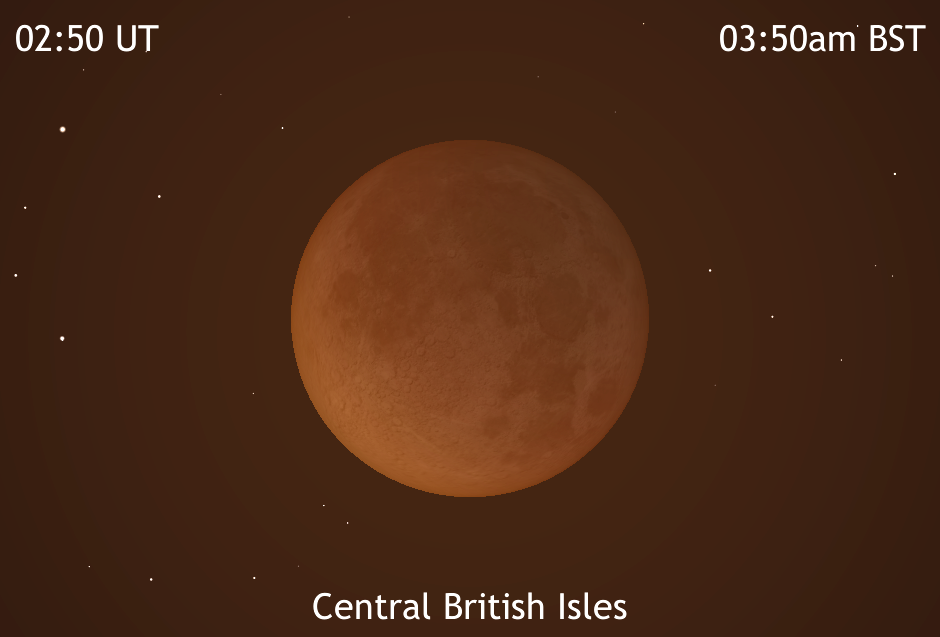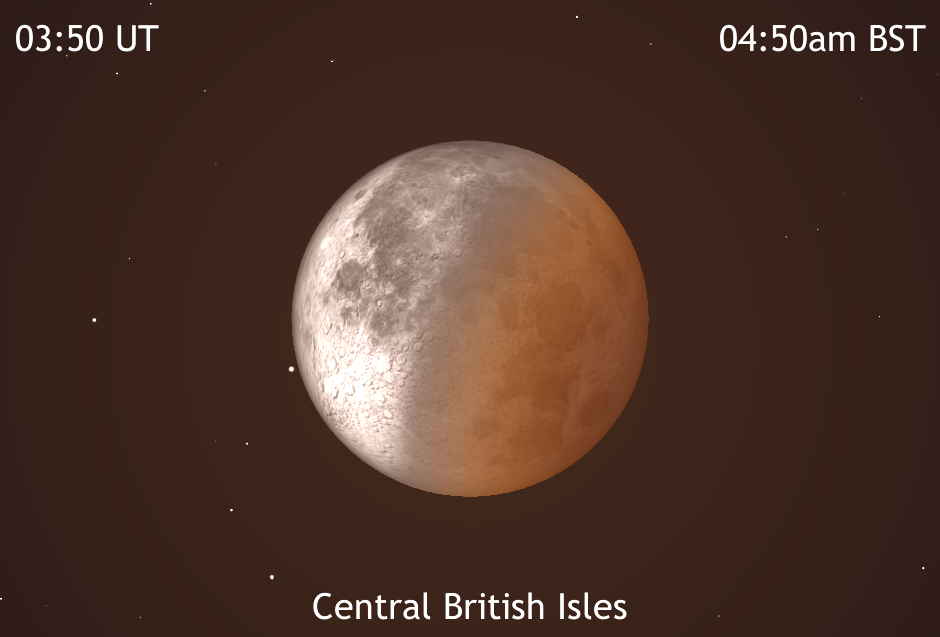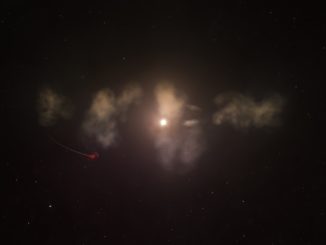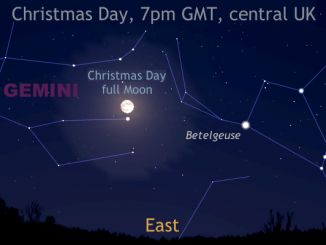
Furthermore, this is no ordinary total lunar eclipse — it’s a supermoon eclipse — one that occurs just an hour after the Moon passes closest to Earth in its elliptical orbit (termed perigee), so the lunar orb will appear almost 8 percent larger than an average full Moon. The Moon will be plunged into densest part of the Earth’s shadow (the umbra) for 1 hour and 12 minutes.
How rare is a supermoon total lunar eclipse?
Total lunar eclipses that coincide with a supermoon are quite rare. Since 1900, there have been just five — on 17 November 1910, 27 November 1928, 8 December 1946, 19 December 1964 and 30 December 1982 (all dates UT). If you get clouded out for this month’s totally eclipsed supermoon, then you will have to wait until 8 October 2033 for the next!
The following NASA information video describes the event from an American perspective, where it occurs late into the evening of Sunday, 27 September:
Two contrasting lunar eclipses
The last time that the full Moon slipped into the Earth’s shadow was on 4 April this year. That was a very short-lived total lunar eclipse; totality was just four minutes long (though some authorities now believe that it was technically a partial eclipse owing to a new calculation downsizing the diameter of the Earth’s shadow) and the spectacle was best seen from the Antipodes. April’s eclipsed Moon was also particularly small (diameter 29.7 arcminutes, geocentric) since it occurred 3 days after the Moon was furthest from the Earth in its orbit (termed apogee).
The circumstances of the 28 September total lunar eclipse could scarcely be more different! Not only will the full Moon reside in the constellation Pisces this time — almost the exact opposite side of the sky to April’s lunar eclipse in Virgo — but the close proximity and hence unusually large size of this full Moon (diameter 33.5 arcminutes, geocentric) means that it will be almost 13 percent larger than it was at the previous eclipse.
A morning eclipse in Western Europe and West Africa
The event will be visible in its entirety (including penumbral phases) from West Africa, the Netherlands, Belgium, France, the British Isles, Spain, Portugal, Iceland and Greenland on the morning of Monday, 28 September.


An evening eclipse in the Americas
If we head west across the Atlantic, almost anyone living east of a line drawn between Lake Winnipeg and mid-Texas will also see the entirety of the eclipse (including penumbral shadow phases), late into the evening and night of Sunday, 27 September. South America has the best view of all, with the full Moon overhead at mid-eclipse just northeast of Brazil.
Can I see the eclipse from where I live?
Unlike a total solar eclipse that is only visible from a narrow swathe of land or sea where the tip of the Moon’s shadow brushes the surface of the Earth, a total lunar eclipse is visible from an entire hemisphere of our planet where the full Moon happens to be above the horizon. From the times of the eclipse stages outlined above, you need only consult our online Almanac where you can select your nearest city, type in the Universal Time (UT) of the appropriate stage and see if the Moon is visible or not. (Almanac tip: ensure that daylight savings time is selected/deselected, as appropriate for your location.)
From the times of the eclipse stages outlined above, you need only consult our online Almanac where you can select your nearest city, type in the Universal Time (UT) of the appropriate stage and see if the Moon is visible or not. (Almanac tip: ensure that daylight savings time is selected/deselected, as appropriate for your location.)
What if it is cloudy?
It is sadly inevitable that overcast skies will spoil parts of this special event for some of you, but don’t despair if you’re clouded out — you can watch NASA’s live stream online here! Coverage will be from 1am BST until at least 4:30am BST (00:00—03:30 UT) on 28 September (8pm—11:30pm EDT on 27 September) broadcast from Marshall Space Flight Center in Huntsville, Alabama, with a live feed from the Griffith Observatory, Los Angeles, California.
Observers in the British Isles have to wait until the morning of Monday, 21 January 2019 for the next ‘normal’ total lunar eclipse visible from these shores.
Clear skies!
Inside the magazine
You can find out more about observing this special total lunar eclipse in the September edition of Astronomy Now in addition to a full guide to the night sky.
Never miss an issue by subscribing to the UK’s biggest astronomy magazine. Also available for iPad/iPhone and Android devices.




